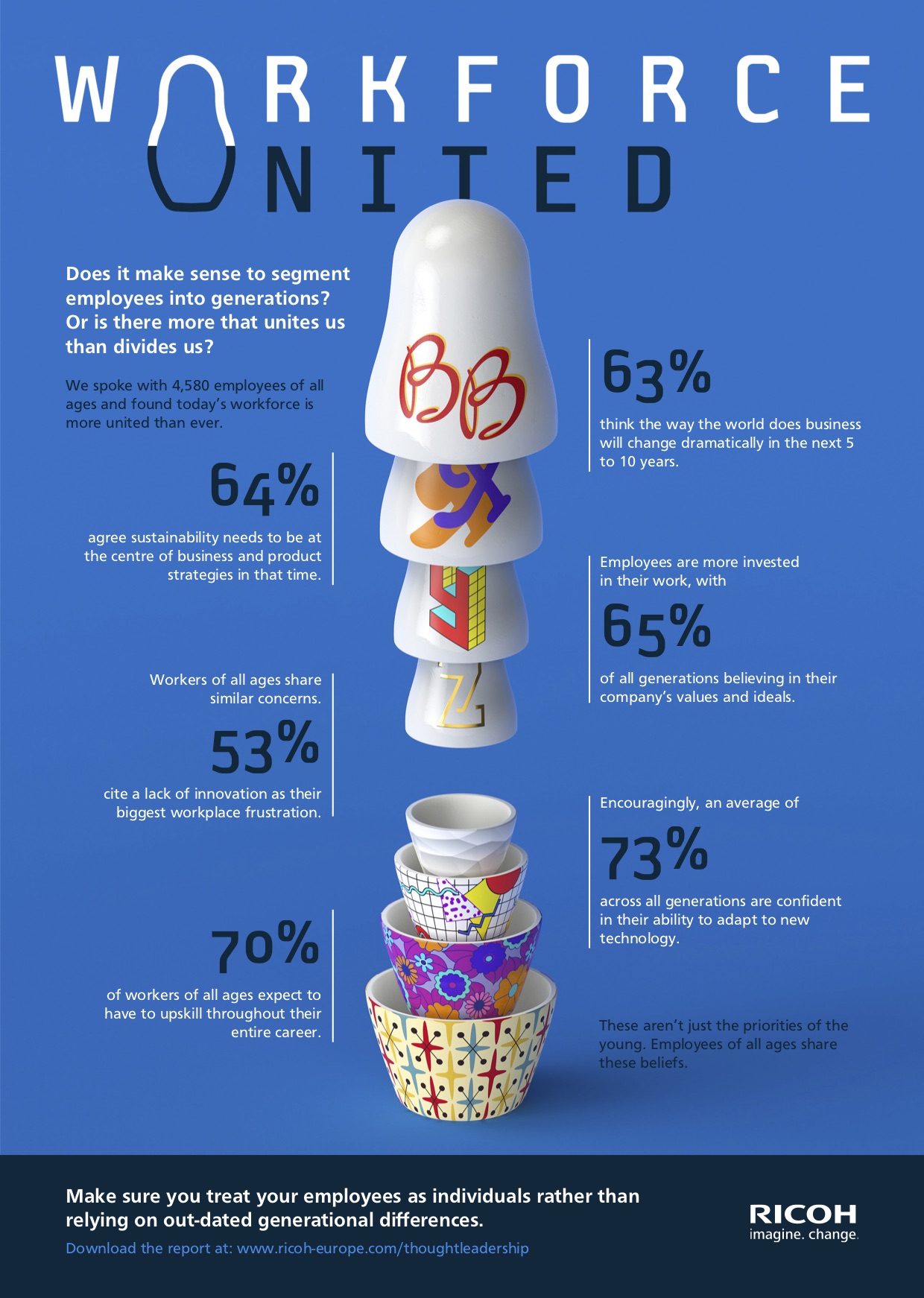04 Jun Have demographics had their day?
A few years ago, Ricoh conducted a study into the arrival of Gen Z (those born after 1996) in the workplace. This would be the first time that there were four generations – Generations X, Y, Z and the ‘Baby Boomers’ – working side-by-side. It found that employees were concerned that leadership weren’t doing enough to cater to the tastes of this multi-generational workforce.
Fast-forward a few years and what has changed? Gen Z have settled in and some of the baby boomers have retired. And exciting new trends mentioned in the first report, such as flexile and remote working, have become the norm for most businesses.
But what about the concerns voiced by employees back in 2015? Did management figure out how to accommodate this multi-generational workforce?
Not so different after all
A new report from Ricoh suggests that the concern voiced the first time around may have been unfounded. In fact, it has found that there is a surprising degree of consensus between the generations.

Far from struggling to get along, employees enjoy working across different age groups and agree on many of most of the important questions. If you’d like to learn more, click here to read the full Workforce United report.
Have ‘demographics’ had their day?
Last year, Netflix announced that they had stopped targeting users with content based on their age, location and gender. “Geography, age, and gender? We put that in the garbage heap,” Netflix’s VP of the product said.
Instead, they group their users into clusters based on taste. After all, if a user watches a lot of science-fiction, it makes sense to recommend them more science-fiction shows to watch. Whether the user is a teenage boy or a female retiree.
Similarly, Google has announced that they believe that ‘Demographics are dead’ and that it’s more important to tailor services for users based on behaviour or intent. It’s worth noting that Google is talking about marketing as opposed to life in general. But the pronouncement hints at a wider trend, supported by the findings of our latest report. That assumptions based on demographic data such as age and gender are precisely that – assumptions. And while they were certainly useful in the past, they can lead us to false conclusions.
How should decision-makers use this information?
Rather than grouping your workforce into demographic bands, you should create clusters around different work styles, goals or levels of seniority. End-user personas are a great way of doing this. They can help you map out what your different end-user groups want to achieve and how you can help them get there. We’ll be publishing a post on how to create end-user personas for your workforce later this week.
Click here to download a copy of the full Workforce United report.



